 Welcome to the epilogue to my epic two-week series of dissecting Marvel’s Most-Wanted Omnibuses.
Welcome to the epilogue to my epic two-week series of dissecting Marvel’s Most-Wanted Omnibuses.
Really, in comic terms, it’s more of an Aftermath – the messy ensuing action after a lengthy tale.
After weeks of going through a list of books that are largely old and generally already-collected, I found myself wondering if they really were the 59 runs most deserving of oversize treatment from Marvel.
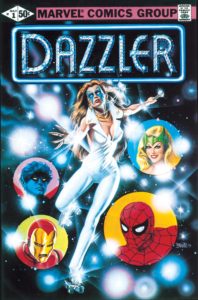 Let’s face it – a lot of comic collecting is focused on recapturing the magic of our youth (or, finally owning the things we couldn’t afford back then – which I suppose is the same thing). The Marvel’s Most-Wanted Secret Ballot is pretty reflective of this. If we were to exclude all of Marvel’s original Big 9 Silver Age 1960s titles (Fantastic Four, Avengers, X-Men, Cap, Iron Man, Thor, Hulk, Daredevil, & Spider-Man) and do a recount we’d be down to 37 books; if we excluded everything mostly composed of pre-1991 material, it would be a scant 21 volumes.
Let’s face it – a lot of comic collecting is focused on recapturing the magic of our youth (or, finally owning the things we couldn’t afford back then – which I suppose is the same thing). The Marvel’s Most-Wanted Secret Ballot is pretty reflective of this. If we were to exclude all of Marvel’s original Big 9 Silver Age 1960s titles (Fantastic Four, Avengers, X-Men, Cap, Iron Man, Thor, Hulk, Daredevil, & Spider-Man) and do a recount we’d be down to 37 books; if we excluded everything mostly composed of pre-1991 material, it would be a scant 21 volumes.
What about everything else? What about littler known pre-1991 runs and modern stuff that’s deserving of massive tomes?
That’s the list I bring to you today: For your consideration, 50 major Marvel runs that obviously fit well into an Omnibus edition without relying on the classic runs of those original nine titles and with flipping the ratio of pre-1991 books. Maybe not all of these runs fit into the “most-wanted adjective,” but none of them are duds.
In all seriousness, I’d probably buy every one. To help temper that enthusiasm, I’ve also argued the con side of each potential book – why should this content not be omnibused?
Think of this as your extended ballot for the 2017 survey, or your nearly inexhaustible rainy-day reading list (especially if you have Marvel Unlimited, where many of these runs are available in their entirety).
![]()
Ant-Man / Giant Man (1962 – 1980)
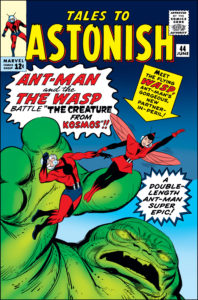 Possible Contents: Tales to Astonish #27, 35-69 from the Epic Collection, plus further Ant-Man tales from Avengers #1-3 & 93, Iron Man #44, Marvel Feature #4-10, Power Man #24-25, Marvel Premiere #47-48, and material from The Incredible Hulk Weekly #48-49
Possible Contents: Tales to Astonish #27, 35-69 from the Epic Collection, plus further Ant-Man tales from Avengers #1-3 & 93, Iron Man #44, Marvel Feature #4-10, Power Man #24-25, Marvel Premiere #47-48, and material from The Incredible Hulk Weekly #48-49
What is it? Hank Pym’s early adventures with The Wasp that pre-date the Avengers, alternating between minuscule Ant-Man and massive Giant Man, plus a few of his significant stories since then.
Why do we need it? Ant-Man is the only Marvel movie to not merit at least one corresponding omnibus! Surely they have to rectify the situation for a sequel.
Why not? Movie Ant-Man is Scott Lang, not Hank Pym. Plus, these adventures aren’t particularly distinguished, and the Tales To Astonish mater has been recently covered in an Epic Collection to replace two increasingly hard-to-find Marvel Masterworks.
Want to read it? Just pick up the Ant-Man / Giant Man Epic Collection and you’ll have most of this covered.
![]()
Black Panther (1966 – 1979)
Possible Contents: Fantastic Four (1961) #52-54, 56, 60, & Annual 5, Avengers (1963) #61-62, 73-74, & 77-79, Jungle Action #6-24, Black Panther #1-15, Marvel Premiere #51-53, and material from Marvel Team-Up #100
What is it? Black Panther’s introduction in Fantastic Four, his key Avengers stories, and comprehensive solo appearances from his two Marvel Masterworks volumes.
Why do we need it? Early Black Panther stories were groundbreaking not just for featuring a black superhero, but for basing him in a technologically advanced African society that had never known defeat. With his 2017 blockbuster movie focused on his own nation of Wakanda, it would make sense to accompany it with this Silver Age take on the character.
Why not? Competing collections. A first Black Panther Epic Collection will hit the first half of these contents this fall, with the second half covered by a Marvel Masterwork in the same period (though neither will cover those key Avengers stories, which introduce Man-Ape).
Want to read it? Guide to Black Panther
![]()
Namor, The Sub-Mariner (1961 – 1969)
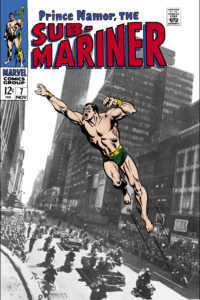 Possible Contents: Marvel Comics #1, Fantastic Four #4, 6, 9, 14, 27, 33, & Annual 1, Strange Tales #107, Avengers #3-4, X-Men #6, Strange Tales #125, Daredevil #7, and Tales To Astonish (1959) #70-101, Iron Man and Sub-Mariner #1, and The Sub-Mariner #1-13.
Possible Contents: Marvel Comics #1, Fantastic Four #4, 6, 9, 14, 27, 33, & Annual 1, Strange Tales #107, Avengers #3-4, X-Men #6, Strange Tales #125, Daredevil #7, and Tales To Astonish (1959) #70-101, Iron Man and Sub-Mariner #1, and The Sub-Mariner #1-13.
What is it? After Namor’s return in Fantastic Four #4 he spends a few years playing spoiler to Marvel’s new age of heroes before resuming his own adventures as Marvel’s premiere anti-hero.
Why do we need it? Even if he isn’t as popular today, Namor was a major building-block of Marvel’s superhero universe, and his writing team in this period was the best of Marvel’s best – Stan Lee, Roy Thomas, and Archie Goodwin, plus art by John Buscema and Namor’s creator Bill Everett.
Why not? Namor isn’t the biggest seller on his own, and even his oldest Marvel Masterworks are not the hardest to come by. However, this edition would have the added attractions of collecting his early Silver Age villain material into one place. If Marvel ever put him on screen, I think this would be a lock.
Want to read it? Guide to Namor
![]()
Luke Cage, Hero For Hire & Power Man (1972 – 1978)
Probable Contents: Luke Cage, Hero for Hire #1-16 and Luke Cage, Power Man #17-49 & Annual 1
What is it? Luke Cage is a prisoner due to his teen years of petty crime when he volunteers for an experiment that gives him unbreakable skin, which he decides he can use to benefit both his city and himself when he returns to New York as a hero for hire.
Why do we need it? While Marvel had Black Panther as a marquee black hero in the 60s, he was yet another Marvel man in the super-genius scientist mode. Luke Cage was a just a normal guy, which allowed Marvel to (for better or worse) write about the black experience at the street level, which frequently echoed blaxploitation themes from films of the period.
Why not? We just received the first Luke Cage Masterworks last year, which covered a hefty range of #1-16. That’s not a coincidence – it’s exactly a third of his series. That means we’re probably going to have to wait the customary three Masterworks to get this omnibus – so Marvel should hurry up and schedule those next two volumes!
Want to read it? Guide to Luke Cage
![]()
The Invaders (1975 – 1979 & 1993)
Probable Contents: Invaders #1-41 & Annual 1, Giant-size Invaders #1-2, Marvel Premiere #29-30, Avengers #71, Invaders (1993) #1-4, and What If? (1977) #4
What is it? Marvel’s 1970s retrospective WWII series that filled in the untold adventures of Cap, Bucky, Namor, the original Human Torch, Union Jack, and Spitfire.
Why do we need it? One of Marvel’s first (and best) retcons, The Invaders retroactively adds WWII adventures that make sense in continuity to Captain America’s history, and adds a female hero (Spitfire) to the testosterone-heavy gang.
Why not? This is a fine set of material, but it’s not prohibitively classic and was just collected into a pair of Complete collections. If there ever was a time it made sense for it to hit Omnibus, it was probably along with either the first or the third Captain America movie.
Want to read it? Contained in Guide to Namor
![]()
Nova (1976 – 1979)
Probable Contents: Nova (1976) #1-25, Amazing Spider-Man #171, Defenders (1972) #62-64, Fantastic Four Annual 12, Marvel Two-In-One Annual #3, and Fantastic Four #204-206 & 208-214
What is it? Marvel’s first try at paying homage to Peter Parker as Spider-Man, this regular teenager suddenly found him defending the universe as part of an intergalactic police force in a pretty obvious ripoff of Green Lantern.
Why do we need it? Nova was part of the rapid expansion of Marvel’s cosmic canon in the mid-70s without getting as psychedelic or philosophic as Warlock, and he’s a hero that could still team up with Spider-Man in a way that made sense.
Why not? This Nova – Richard Rider – was killed off by Marvel a few years ago and fans are still raging over it. With a new Nova in comics and Rider not yet in the Marvel films, Marvel isn’t doing anything to generate fresh demand for this material. Even if there was demand, it’s just as likely Marvel would tap a perfectly omnibus-lengthed and more mature 2000s Nova series by Dan Abnett & Andy Lanning that is concurrent with their Guardians of the Galaxy series.
Want to read it? Guide to Nova
![]()
Ms. Marvel (1977 – 1979 & 1992)
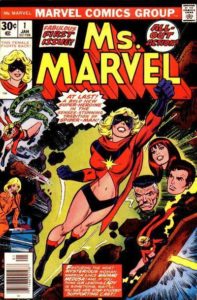 Probable Contents: Ms. Marvel #1-23, Marvel Super-Heroes (1990) #10-11 (which are effectively #24-25 published over a decade later), Avengers (1963) #197-199 (excerpts), 200 & Annual 10, and material from Marvel Fanfare (1982) #24
Probable Contents: Ms. Marvel #1-23, Marvel Super-Heroes (1990) #10-11 (which are effectively #24-25 published over a decade later), Avengers (1963) #197-199 (excerpts), 200 & Annual 10, and material from Marvel Fanfare (1982) #24
What is it? Former Air Force pilot Carol Danvers works as a magazine editor by day while she lives a double-life as a newfound superhero thanks to Kree DNA spliced into her own.
Why do we need it? Ms. Marvel was Marvel’s first attempt at a feminist approach to superheroes and is planned to be their first female-led movie. Sure, it debuted under the pen of Archie Goodwin, but he openly credited his wife Carla for consultation – and most people don’t realize that starting with issue #3 the book was written by Chris Claremont. Seriously. Plus, even before she was a hero, Carol Danvers was head of security at an Air Force base. In her own series, she was a magazine editor by day (the implication: she’d be in charge of both Peter Parker and Clark Kent) pushing for equal pay. Even the “Ms.” in the title was a signifier of the feminist movement.
Why not? This series is freshly Masterworked, with the second volume out in a few weeks. That means we need to give those volumes a little bit of space before recollecting them. Past that, the feminist trappings of the 1970s are going to seem downright repressed to modern readers who love the outspoken Danvers as Captain Marvel.
Want to read it? Guide to Captain & Ms. Marvel
![]()
Spider-Woman (1977 – 1983)
Possible Contents: Marvel Spotlight (1971) #32, Marvel Two-In-One (1974) #29-33, & Spider-Woman (1978) #1-29, Marvel Team-Up (1972) #97, Spider-Woman #30-39, Uncanny X-Men #148, Spider-Woman #40-50 – plus, maybe The Avengers (1963) #238, 240-242 to wrap up her story.
What is it? Marvel rushes out a female spider-person before their network partners snag the copyright, but then has to figure out what to do with her.
Why do we need it? Spider-Woman could have been a throw-away copyright grab, but somehow she lasted for a 50-issue series – the record for a female character at Marvel for over a decade. While frequently changing writers introduced some inconsistency to the title, the initial Wolfman/Gruenwald run are good comics that include a sublime stint of of Carmine Infantino pencils, and Chris Claremont also had a later run as a writer. The layers of accumulated backstory – from Hydra brainwashing to pheromone powers – wind up being complementary rather than confusing. They made for a terrific canvas for Brian Bendis to work with almost thirty years later when he adopted the character.
Why not? This was never super-likely both due to content and size – it approaches 60 issues (but it did fit into two Essentials, which can be crammed into an Omnibus). With the first Masterwork volume of at least four out in 2015 it’s probably not on its way in omnibus any time soon. The frequent writer changes make for a lot of yo-yo inconsistency that would be more annoying in an omnibus than in multiple smaller volumes.
Want to read it? Guide to Spider-Woman
![]()
The Savage She-Hulk
Possible Contents: The Savage She-Hulk #1-25, plus Marvel Team-Up #107, and maybe even Dazzler #14 and Marvel Two-in-One #88.
What is it? Bruce Banner’s shy lawyer cousin turns a fraction of his big and green after a blood transfusion in a copyright grab by Stan Lee to ensure CBS wouldn’t try to lay claim to her as a spinoff from The Incredible Hulk TV series.
Why do we need it? She-Hulk’s 25-issue run has a consistent set of creators for all but one issue (the first, with Stan Lee). David Anthony Kraft takes her on a markedly different journey than monstrous heroes like Hulk and The Thing – she eventually decides she likes life better big and green, and eschews her human form!
Why not? This run isn’t greatly praised and Marvel just skipped the chance to release this timed to her minor fame in Civil War II in favor of printing a Byrne TPB from the 80s. The fact that the much-lengthier Spider-Woman hit MMW makes me think we can get this as a two-and-done series in MMW in the rotational spot current occupied by Ms. Marvel rather than as an omnibus..
Want to read it? Guide to She-Hulk. Your only option at the moment is the black and white Essential She-Hulk. Or, you could do what I did – pick up the series on-the-cheap and get it custom-bound (which might turn out to be cheaper than an omnibus if you can get a good deal on the single issues).
![]()
Ka-Zar The Savage (1981 – 1984)
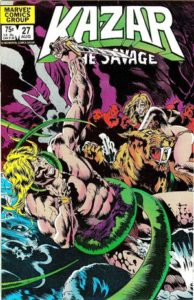 Probable Contents: Ka-Zar The Savage #1-34, material from Marvel Fanfare #1-4 & 56-60, A-story from Uncanny X-Men Annual 7, Avengers #257-258.
Probable Contents: Ka-Zar The Savage #1-34, material from Marvel Fanfare #1-4 & 56-60, A-story from Uncanny X-Men Annual 7, Avengers #257-258.
What is it? Marvel’s in-universe version of Tarzan debuted in X-Men #10; here he adventures in the Savage Land and back in America along with buxom former-zoologist-gone-native Shanna.
Why do we need it? Ka-Zar’s longest-running series to date was penned almost entirely by Bruce Jones and has turned into a forgotten gem. Getting it all in one shot would scratch a wonderful pulp-hero itch for classic Marvel fans with none of the pesky licensing issues in the way that came with Fu Manchu.
Why not? Ka-Zar is as D-list as it gets in the current Marvel world – even Shanna has a higher profile! Also, it will take another pair of Masterworks (at least) to advance his prior two series Astonishing Tales and Ka-Zar to this point – so, we probably shouldn’t spend any dollars or attention on this until that line is complete!
Want to read it? These issues have never been collected!
![]()
 Dazzler (1981 – 1986)
Dazzler (1981 – 1986)
Probable Contents: Uncanny X-Men #130-131, Fantastic Four #217, Amazing Spider-Man #203, Marvel Team-Up #109, Dazzler #1-42, Dazzler Graphic Novel, + optional Beauty & The Beast #1-4
What is it? An increasingly bold Marvel wanted to expand their cross-merchandising reach from toys and TV to music and concert tours, so they debuted this mutant singer who generates her own spotlight.
Why do we need it? Dazzler is a comic that could work just as well in a modern context. She was pretty much the Squirrel Girl of the early 80s – an unlikely (and often unwilling) supehero with a rogue’s gallery that spanned the Marvel Universe and an uncanny way of becoming the victor in any fight.
Why not? Let’s be clear – this is my most-wanted omnibus of all time and I would pay a hefty price for it. Sadly, it’s probably not happening anytime soon. Despite an increased profile in the past few years, Dazzler remains a relatively mid-tier Marvel character and is still the butt of lot of jokes – she’s pretty much Marvel’s Aquaman, but without the occasional respect.
Want to read it? See Dazzler in the X-Men Ongoings Guide.
![]()
The Thing (1983 – 1986)
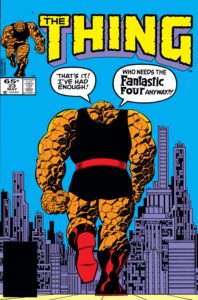 Possible Contents: The Thing #1-36 & Fantastic Four #274
Possible Contents: The Thing #1-36 & Fantastic Four #274
What is it? The Fantastic Four’s heavy-hitter breaks out in his own adventures, with 2/3 of the run by John Byrne.
Why do we need it? While we might not think of the orange brick wall as the Fantastic Four’s breakout character today, there was no denying his popularity in the 70s, when he anchored team-up book Marvel-Two-In-One for nearly a decade. This title was his first true solo, launched by John Byrne directly out of MTiO‘s end. Moreso than any book before or after, The Thing managed to round out Ben Grimm’s history and give him his own memorable adventures – everything from a glimpse at his life on Yancy Street to him remaining behind on the Secret Wars battleworld when all the other heroes left.
Why not? The fact is, we don’t think of Thing as a breakout character anymore, even with Brian Bendis shoe-horning him into Guardians of the Galaxy. If there ever was a time for this, it was last year when the combination of the Fantastic Four movie and Secret Wars made the content incredibly relevant. Maybe if we kept getting good Fantastic Four movies this would have happened (it is more Byrne, after all), but The Thing likely isn’t a big enough character to warrant his own omnibus volume.
Want to read it? See The Thing in Guide to Fantastic Four
![]()
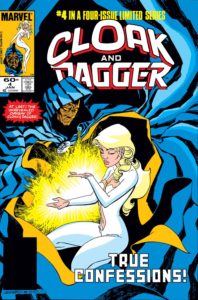 Cloak & Dagger (1985 – 1988)
Cloak & Dagger (1985 – 1988)
Possible Contents: Peter Parker The Spectacular Spider-Man (1972) #64, 69-70, 81-82, 94-96, Marvel Team-Up Annual 6, Marvel Fanfare (1982) #19, Cloak & Dagger (1983) #1-4, Cloak & Dagger, Vol. 2 (1985) #1-11, Strange Tales (1987) #1-19 (A-stories only), Cloak and Dagger: Predator and Prey OGN (1988), Marvel Comics Presents #9. Could add material from New Mutants #23-25.
What is it? A cliche creation of the 80s, a blond lady representing light and a black guy representing darkness are just a pair of at-risk teens crusading against drug addiction after getting their powers from (unwillingly) shooting up.
Why do we need it? Cloak & Dagger are about to become a Marvel TV property, but they’ve never been collected past their initial mini-series! This volume could take us through two more ongoing series, covering more of the development of their characters and enemies. Sadly, we probably can’t squeeze in all of their 1989 19-issue series even if we omit the Spider-Man run-up.
Why not? Marvel kept bashing away at the Cloak & Dagger concept throughout the 80s, but it never turned into a solid hit. The only reason the characters are in the conversation right now is because an ABC channel picked them up for potential TV pilot – Cloak has had some decent supporting turns in the past few years, but Dagger is a non-entity. We’re getting a new TPB in early 2017 that likely collects at least half of this material, so an omnibus probably isn’t in the cards.
Want to read it? Guide to Cloak & Dagger.
![]()
Dr. Strange: Sorcerer Supreme, Vol. 1 (1988 – 1991)
Probable Contents: Doctor Strange, Sorcerer Supreme #1-30, Ghost Rider (1990) #11-12, plus additional material from Namor The Sub-Mariner (1990) #Annual 1, Marvel Comics Presents (1988) #79, Marvel Super-Heroes Vol. 3 (1990) #5
What is it? Doctor Strange continues his run of solo series with the Marvel Universe believing he is dead!
Why do we need it? This is a modern take on Doctor Strange that isn’t going to look and sound as foreign to present day fans as the 60s and 70s runs Marvel is currently slinging into collections. Given that Strange didn’t have another solo ongoing after the end of this until 2015, Marvel should be getting it out in collected editions pronto. Plus, this book starts with a knock-down, drag-out magical fight against Dormammu and ends by abutting the contents of Infinity Gauntlet.
Why not? Doctor Strange has a lot of extremely classic material, and while this is a fun read it’s not at the level of some of his prior series. It would be much more efficient to capture this in a series of Epic collections, considering it stretches on for another 60 issues.
Want to read it? Guide to Doctor Strange. You’re out of luck – Marvel hasn’t touched it yet in collected editions.
![]()
Ghost Rider: Danny Ketch, Vol. 1 (1990 – 1992)
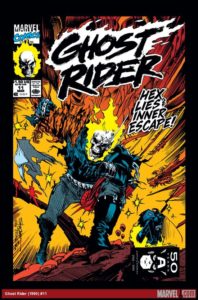 Probable Contents: Ghost Rider (1990) #1-27 & 29-30, plus Fantastic Four #347-349, X-Men (1991) #8-9, and potential Marvel Comics Presents material.
Probable Contents: Ghost Rider (1990) #1-27 & 29-30, plus Fantastic Four #347-349, X-Men (1991) #8-9, and potential Marvel Comics Presents material.
What is it? A new rider takes up the mantle (and the demonic possession) and quickly becomes one of Marvel’s early-90s money-makers – most readers never even realized there was an original!
Why do we need it? While all of us classics fans are clamoring for a 70s Ghost Rider collection, this is where the action is – a vivid 90s series that plays up the supernatural pantheon of Ghost Rider foes and crosses over with X-Men. Ghost Rider was part of a popular ultra-violent club with Punisher and Wolverine at the time, but this material makes for relatively solid reads. It would fit right in for modern fans of shows like Supernatural and Lucifer.
Why not? As with Doctor Strange, I think we’d be much more likely to knock out this material quickly if it hit Epic Collection. After this period, there are tons of tie-in books mixed in to make things confusing. Plus, we just got the Sons of Vengeance crossover that abuts this in TPB rather than OHC, so why have a mixed shelf?
Want to read it? Guide to Ghost Rider
![]()
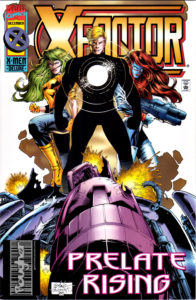 X-Factor: The End by Howard Mackie (1995 – 1998)
X-Factor: The End by Howard Mackie (1995 – 1998)
Possible Contents: X-Factor #112-149, Marvel Fanfare Vol. 2 #6, Sabretooth & Mystique #1-4, Sabretooth: Back to Nature
What is it? The line between heroes and villains get a little blurry with this team transitioning from being lead by Havok to Mystique being in charge.
Why do we need it? Sure, it seems like wishful thinking to throw the tattered end years of a long series on a list like this. Except, X-Factor actually holds some interest for general audiences since it marked Mystique’s first consistent starring turn in a title plus one of the lengthiest domestications of Sabretooth.
Why not? There’s hardly any demand for late-90s runs of X-Men aside from the screaming of completionists. These stories are generally a dead-end that aren’t frequently referenced later. Plus, none of the rest of X-Factor has hit oversized format (except when included in Uncanny X-Men collections) – we should probably get the issues before #112 taken care of first!
Want to read it? Guide to X-Factor
![]()
Mutant X by Howard Mackie (1998 – 2001)
Probable Contents: X-Factor #149, Mutant X #1-312& Annuals 1-2
What is it? Havok blasts himself into a twisted alternate reality where the X-Men are more than a little different than our own and he’s forced to be the big hero Summers brother.
Why do we need it? The world of X-Men only has so many self-contained runs and lucks for anything especially subversive aside from Morrison and X-Statix. This is both, and because it’s an alternate reality it features just about every X-Men anyone knows or loves.
Why not? There’s really not a hook to hang this book from since Havok left Uncanny Avengers and isn’t prominent in the X-Men films past First Class. In a world where he stayed visible in both, this off-kilter book would make a solid single-volume read. Instead, it languishes uncollected.
Want to read it? Unfortunately, nothing from this series has been collected!
![]()
Fantastic Four by Claremont/Larocca
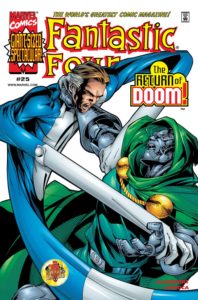 Probable Contents: Fantastic Four #1-34 & 1/2, Annual 1998 (by Karl Kessel) & 1999 (by Claremont)
Probable Contents: Fantastic Four #1-34 & 1/2, Annual 1998 (by Karl Kessel) & 1999 (by Claremont)
What is it? Fresh from exile in the Heroes Reborn universe, Fantastic Four return to Marvel continuity under the pens of X-Men mastermind Chris Claremont and the always-consistent Salvador Larocca.
Why do we need it? Chris Claremont already proved he was the master of the concept of a comic team as family with his many runs of X-Men, so why not have him write Marvel’s first family – the Fantastic Four! He injects a title that got tired in the early 90s with new life, including new rogues and a long-running Dr. Doom plot that’s appropriately soap-y – he intends to marry Susan Storm!
Why not? As he tends to do, Claremont crosses over all of his favorite toys into this run, whether that’s Excalibur characters like War Wolves or prior concepts like daughters sent to the future and returned as badasses. None of them are a terrific fit for FF, which makes this run feel a little odd.
Want to read it? Guide to Fantastic Four
![]()
Captain America, Vol. 3 by Mark Waid & Captain America by Dan Jurgens (1998 – 2002)
Mark Waid Probable Contents: Captain America (1998) #1-24, Captain America/Citizen V ’98 (Annual 1998), Annual 1999, Quicksilver #10, Avengers #7, Iron Man #7, material from Captain America: The Legend, and Captain America: Sentinel of Liberty #1-12 (could also include the prior Waid run on Captain America (1968) #444-454)
Dan Jurgens Probable Contents: Captain America (1998) #25-50 & Annuals 2001-2002, USAgent (2001) #1-3, Captain America: Dead Men Running #1-3
What is it? Mark Waid returns to Captain American as he rejoins the main Marvel Universe and brings him back to a core of patriotic adventures, which Dan Jurgens continues to steer.
Why do we need it? Aside from Waid and Jurgens as stellar writers and a very straightforward patriotic theme free of wolves, dead Caps, and defections to Hydra, this run had some awesome artwork – from Ron Garney, Andy Kubert, and Dan Jurgens.
Why not? I seriously have no idea. This is a self-contained marquee run of two of Marvel’s best early 2000 writers and most of it looks great. That said, the run of Waid collections are available for pennies on the dollar – though the Jurgens collections are getting harder to find.
Want to read it? Guide to Captain America
![]()
Thor by Dan Jurgens Volumes 1 & 2 (1998)
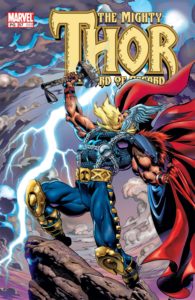 Probable Contents: Thor (1998) #1-85 & Annuals 1999-2000, Peter Parker: Spider-Man #2 & 11, Iron Man (1998) #21-22 & 64, Juggernaut (1999) #1, Avengers #63, Marvel Double Shot #1, and Stormbreaker: The Saga of Beta Ray Bill (2005) #1-6
Probable Contents: Thor (1998) #1-85 & Annuals 1999-2000, Peter Parker: Spider-Man #2 & 11, Iron Man (1998) #21-22 & 64, Juggernaut (1999) #1, Avengers #63, Marvel Double Shot #1, and Stormbreaker: The Saga of Beta Ray Bill (2005) #1-6
What is it? Thor takes on a new alter ego after his apparent death at the hands of the Destroyer and winds up watching as Asgard and everyone he loves are destroyed in a Ragnarok!
Why do we need it? This is a straight-forward Thor run where veteran scribe Jurgens puts him through his paces against a treasure trove of rogues and Asgardian intrigue. However, it’s the non-Jurgens finale (by Michael Avon Oeming) that’s really memorable. Marvel goes through with an actual Ragnarok, portraying the end times of Asgard and leaving Thor adrift in nothingness for three whole years without an appearance or title to his name – the longest break that any of Marvel’s original nine silver age heroes has ever had!
Why not? All of the Jurgens material is readily available without interruption in two generations worth of paperback collections. Despite Jurgen’s focus on Asgard, only the tail end of the series will be a terrific match to the new film (although Hela does appear throughout).
Want to read it? Guide to Thor
![]()
Black Widow (1999 – 2011)
Possible Contents: Black Widow (1999) #1-3, Black Widow #1-3 (2001) #1-3, Black Widow (2002) #1-3 (stars Yelena, not Natasha), material from Marvel Knights #1-15 and Marvel Knights, Vol. 2 #1-6, Marvel Knights Double-Shot #4, Black Widow, Vol. 4 #1-6, Black Widow, Vol. 5 #1-6, Black Widow: Deadly Origin #1-6, Black Widow (2010) #1-8, and possibly Captain America and Black Widow #636-640.
What is it? A collection of Black Widow’s many short runs from 1999 through the start of Marvel Now, currently collected in a hodge-podge of different hardcovers and paperbacks.
Why do we need it? These books represent the main thread of Widow’s story for over a decade where she wasn’t getting a lot of development anywhere else (aside from in Invincible Iron Man) and offer a lot of brief, digestible stories that don’t rely on a ton of tie-ins to understand.
Why not? Marvel doesn’t tend to do well with these collections of disparate material, and not one of these series was especially critically beloved (aside from perhaps the opening Marjorie Lui arc of the 2010 series, which was discounted for years).
Want to read it? Guide to Black Widow
![]()
Iron Man (1998), Volumes 2 & 3 (2000 – 2004)
Volume 1 Probable Contents: Iron Man #26-55, & 1/2, and Iron Man Annual 1999 and 2000
Volume 2 Probable Contents: Iron Man #56-89, Thor #58, and Avengers #63
What is it? This run brings Iron Man up to speed with the movie status quo of everyone knowing Tony Stark wears the golden armor after a battle with Whiplash, but finds him in a long-term romance with someone other than Pepper and battling the next generation of Mandarin.
Why do we need it? I always find it hard to summarize Iron Man runs other than saying “his adventures take a backseat to his business” or “his business takes a backseat to his adventures.” This run is a little of both, with a number of brief arcs written by a stream of writers – Joe Quesada, Frank Tieri, Mike Grell, Robin Laws, John Jackson Miller, and Mark Ricketts. Unlike Captain America and Thor’s runs from this period, this has been largely uncollected up to this point aside from the Joe Quesada scripted and penciled kickoff that reveals Tony Stark’s identity.
Why not? I’ll refer you to the list of six writers, of whom you’ve likely heard of three, at best. This is a forgettable run after Quesada steps away, although some of Grell’s work is solid. Marvel doesn’t have a history of collecting single-title runs broken by multiple authors into omnibus volumes – especially not a pair of them!
Want to read it? Guide to Iron Man
![]()
Captain Marvel by Peter David, Vol. 1 & 2 (1999 – 2004)
Probable Contents: Two volumes splitting up material from Avengers Forever, Captain Marvel (1999) #0-35. Captain Marvel (2002) #1-25, and New Thunderbolts #18 & Thunderbolts #100 – as well as the potential to include previous stories from Silver Surfer Annual 6, material from Cosmic Powers, Captain Marvel (1995) #1-6, Avengers Unplugged #5, Warlock #1-4 (1998).
What is it? The (sort of) illegitimate son of the original Captain Marvel becomes a literal legacy hero by taking up the name Legacy and adopting his father’s role (and human host of Rick Jones) as a cosmic adventurer, but cosmic power corrupts him cosmically.
Why do we need it? I don’t think this pair of omnibus volumes are even in Marvel’s Top 100, but Peter David is a reliable scripter and this run had a lot of fans at the time. A 60-issue run is a pretty impressive development of a low-tier character, and without all of Marvel’s eyes on him it allowed David to take him on a journey that made sense for the character mostly free of tie-ins and crossovers.
Why not? Really, more Captain Marvel brand confusion from a third character with the title (fourth if you count Monica Rambeau, who doesn’t have enough comics to omnibus)? Given that this little-read version is completely disconnected from current title-holder Carol Danvers and features a long-since-dead character, I think this is an impossibility. Now, if they were to bring him back as a Captain Marvel villain…
Want to read it? Guide to Captain Marvel
![]()
Weapon X by Frank Tieri (2002 – 2004)
Probable Contents: Wolverine #162-166, Weapon X #1-28 & 1/2, The Draft one shot issues of Agent Zero, Kane, Marrow, Sauron, and Wild Child, and Weapon X: Days of Future Now #1-5
What is it? Sabretooth, Maverick, Wild Child, and a number of other Wolverine allies and rogues spin off into their own title bannered under the program that continues to experiment on them – Weapon X!
Why do we need it? Let me get this straight – there’s a team of Wolverine cast-offs and villains under control of the Weapon X program that stars Sabretooth and features Wolverine in half its issues and Marvel is somehow not rushing to collect it? And Mr. Sinister is a villain? What are they waiting for?
Why not? Wolverine isn’t always a surefire omnibus seller, especially not on a bait-and-switch like this – anyone who sees the title “Weapon X” will assume it’s all about him, not that he’s a guest star. Ultimately, this was merely a supporting title in the Morrison/Austen era, and none of its contents are especially significant elsewhere. Plus, past Sabretooth (and a smattering of Fantomex), this is a group of D-listers.
Want to read it? See Weapon X in X-Men Ongoings
![]()
Mystique by Vaughn & McKeever (2003 – 2005)
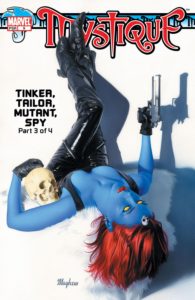 Probable Contents: Mystique #1-24
Probable Contents: Mystique #1-24
What is it? Mystique agrees to run covert missions for Charles Xavier, but is she a double agent or a triple one when she’s manipulated by another powerful master? It’s half X-Men, half J.J. Abrams Alias.
Why do we need it? Mystique’s one and only starring turn is a fun read and has the pedigree of Saga author Brian K. Vaughan writing its first half. Unlike some mid-00s runs on similar villainess-turned-antihero Elektra, this book never tries to complete reform or explain away Mystique as a villain. It just emphasizes that all choices are gray.
Why not? Marvel already repackaged this run into a pair of Ultimate Collections in 2011 which are easily had under cover price, and the Mystique moment is over with Jennifer Lawrence free to flee the rebooted X-Men film framchise.
Want to read it? See Mystique in X-Men Ongoings.
![]()
New X-Men Academy: Vol. 1 by DeFilippis & Weir and Vol. 2 by Kyle & Yost (2003 – 2007)
Volume 1, by DeFilippis & Weir Probable Contents: New Mutants (2003) #1-13 and New X-Men: Academy X #1-19 & Special with Hellions #1-4 and Secrets of the House of M.
Volume 2, by Kyle & Yost Probable Contents: New X-Men #20-43 & World War Hulk: X-Men #1-3 (and, optionally, Young X-Men #1-12, X-Men FCBD 2000, and X-Infernus #1-4).
What is it? A first volume featuring a fifth generation of dozens of new X-Men students spills out of Grant Morison’s inane run into its own title, with the former New Mutants as their instructors. A second volume sees the idyllic school setting disassembled by the after-effects of House of M and terroristic attacks from hate groups.
Why do we need it? Never before had the halls of Xavier’s School been so well-developed as in this series, which progressed from watching the New Mutants as recruiters to seeing the school full of so many dozens of named mutants that they filled out several teams worth of junior X-Men! Of course, Marvel’s House of M storyline was meant to decimate just this sort of mutant proliferation, and the resulting horrors took the book to a dark place – and made it a major page-turner.
Why not? This isn’t the most-popular material, and no student became a real breakout star even if scads of them are still around, including Pixie, Rockslide, Anole, Hellion, Dust, Mercury, Elixir, and more. The bigger problem is how the run breaks up – the latter half contains all of the narrative fireworks, but it’s not as impactful without falling in love with the cast in the first half (and seeing their origins in New Mutants). This is probably better off in a series of several Complete Collections, if it ever gets recollected.
Want to read it? Guide to New Mutants
![]()
Runaways by Brian K. Vaughan & Joss Whedon (2003 – 2008)
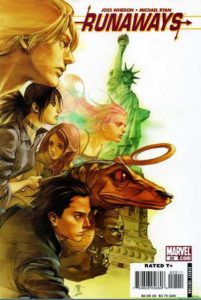 Probable Contents: Runaways (2003) #1-18 & Runways (2005) #1-30
Probable Contents: Runaways (2003) #1-18 & Runways (2005) #1-30
What is it? Brian K. Vaughan dreams up a non-team of powerful Marvel teens from scratch, with a crazy assortment of unique powers and an unlikely (and slightly scary) reason to get to know each other. Then he puts them through horrific experiences – picked up by the king of making characters suffer, Joss Whedon.
Why do we need it? This run has been through every possible format, selling well in each one. It’s a contained story from two of (or: the two) biggest names in 2000s-era comics. It’s inviting in just about every way. It not only requires no backstory or tie-in reading, but virtually no pre-existing knowledge of the Marvel Universe. And, the cast of characters are diverse in every way – gender, color, sexual orientation, and source of powers.
Why not? Runaways aren’t the biggest-name of all Marvel properties and don’t have a current ongoing, so until their ticket comes up for a movie or TV show this probably won’t happen despite the obscene name-recognition of their authors. Plus, the initial Vaughan run is in a weird spot where it’s a bit dull for adult readers but too mature for actual kid readers. In retrospect, this is no Kamala as Ms. Marvel – it just happens to be a decent read on teen relationships.
Want to read it? Guide to Runaways
![]()
Black Panther by Hudlin & Aaron (2005 – 2008)
Probable Contents: Black Panther (2005) #1-41 & Annual 1, X-Men, Vol. 2 #175-176, and maybe Cable & Deadpool #45-46 or X-Men: Worlds Apart #1-4
What is it? Black Panther’s origin is recapped and then the duality of his role as hero and monarch is explored – resulting in his courtship of and marriage to Storm.
Why do we need it? A self-contained Black Panther title that crosses through Civil War with Storm as royal highness and permanent co-star for half the run? This seems like an obvious movie-tie-in omnibus, right?
Why not? Fans don’t love this run – with some expressly disliking it. Either way, it pales in comparison to Priest’s magnificence that came just before. After the first arc it was uneven and largely driven by Marvel events of the day rather than internal influences. The Storm romance is rushed and a little creepy, and the supposed palace intrigue it illustrates makes T’Challa seem like a do-nothing dilettante when it comes to saving the world. There are some enjoyable moments, but this isn’t something I plan to re-read frequently.
Want to read it? Guide to Black Panther
![]()
She Hulk by Dan Slott & Peter David (2004 – 2009)
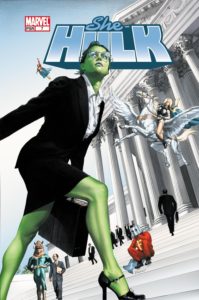 Probable Contents: She-Hulk (2004) #1-12, She-Hulk (2005) #1-38, and Marvel Westerns: Two-Gun Kid, She-Hulk: Cosmic Collision, X-Factor #34-35 (a Secret Invasion crossover), and She-Hulk Sensational (2010).
Probable Contents: She-Hulk (2004) #1-12, She-Hulk (2005) #1-38, and Marvel Westerns: Two-Gun Kid, She-Hulk: Cosmic Collision, X-Factor #34-35 (a Secret Invasion crossover), and She-Hulk Sensational (2010).
What is it? It’s She-Hulk without the Savage in this chuckle-induing series that focuses on her as a lawyer to the Marvel Universe … before a hairpin turn with #22 and incoming writer Peter David, that showed her as a capable action hero that cannier than your average green-skinned monster.
Why do we need it? Dan Slott’s reinvigoration of She-Hulk earned plenty of positive notice and a growing legion of fans, despite Brian Bendis interrupting it in the middle to have her rip The Vision in half during Avengers Disassembled. Yet, however well Slott and Peter David seem to fit together in your mind, David took the series in a completely different, more adventurous direction.
Why not? The Dan Slott material already hit a pair of Complete Collections, while the Peter David material ticked off fans enough at the time that it’s never been recollected. Yet, Slott’s consistency and David’s imagination make this Hulk-sized run of 55 issues just as worthy of an Omnibus compared to the 1970s and 1980s iterations of She-Hulk.
Want to read it? Guide to She-Hulk. You want She-Hulk by Dan Slott: The Complete Collection, Volume 1 and Volume 2 followed by Peter David material in Vol. 6: Jaded, Vol. 7: Here Today, Vol. 8: Secret Invasion, & Vol. 9: Lady Liberators.
![]()
Iron Man by Ellis & The Knaufs (2005 – 2009)
Probable Contents: Iron Man (2005) #1-16, Invincible Iron Man #17-28 & Annual 1, Iron Man: Director of SHIELD #29-35, plus Civil War: The Confession (2007) #1, Iron Man/Captain America: Casualties of War (2007) #1, Marvel Spotlight: Civil War Aftermath (2007) #1
What is it? Iron Man tangles with a deadly invention that would infect him both literally and philosophically for year to come before heading into his central role in Civil War and The Initiative, which finds him as the Director of SHIELD on the precipice of the disaster that is Secret Invasion.
Why do we need it? It’s never hard to sell an Iron Man story by Warren Ellis and Adi Granov, especially one that heavily influenced his screen incarnation. The question is… what about all that other stuff? Largely penned by The Knauf Brothers, I think of this as a sort of “pride before the fall” story, where Iron Man was the biggest hero in the world and the director of the biggest spy organization – so there was nowhere to go but down in Fraction’s subsequent series.
Why not? As my grasping description belies, past the Ellis run this is a hodge-podge of just-okay stories that probably doesn’t merit its own oversize tome. The Ellis and Civil War material have both seen reprint already. Yet, it’s still hard to argue with a book of easy-to-digest, cinematic-adjacent stories from a brief Iron Man volume.
Want to read it? Guide to Iron Man
![]()
X-23 by Kyle, Yost, & Lui (2005 – 2012)
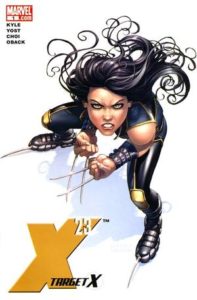 Probably Contents: X-23 (2005) #1-6, X-23: Target X #1-6, Captain Universe/X-23 #1, X-23 #1, X-23 (2010) #1-21 & Daken: Dark Wolverine #8-9, and material from Wolverine: The Road to Hell #1 and All-New Wolverine Saga #1 & Venom: Circle of Four. Possibly also NYX #1-7 and Uncanny X-Men #450-454
Probably Contents: X-23 (2005) #1-6, X-23: Target X #1-6, Captain Universe/X-23 #1, X-23 #1, X-23 (2010) #1-21 & Daken: Dark Wolverine #8-9, and material from Wolverine: The Road to Hell #1 and All-New Wolverine Saga #1 & Venom: Circle of Four. Possibly also NYX #1-7 and Uncanny X-Men #450-454
What is it? Wolverine’s female clone goes through hell as her body and mind are never her own thanks to being rented out to the highest bidder for assassinations. After Captain America (of all people!) helps break her free, she begins to find herself – but not with the X-Men.
Why do we need it? There isn’t a single bad issue of X-23 comic books (well, okay, maybe that Captain Universe special) from her start with Kyle and Yost through Marjorie Lui’s magnificently subtle ongoing series. There are few Marvel supporting characters with such a strong pedigree.
Why not? Marvel is probably hesitating on this one because they don’t do omnibuses of single female characters (the new Ms. Marvel is their first later this year), which lead to them issuing basically the same contents in Complete Collections over the course of the past year. This also suffers from the “lots of disparate” content syndrome. Though X-23’s series form a relatively strong arc for her character, the gap between her joining the X-Men and getting her own ongoing is strongly informed by her role in X-Force, which would be missing.
Want to read it? Guide to X-23
![]()
Young Avengers (2005 – 2011)
Probable Contents: Young Avengers #1-12 & Special, Civil War: Young Avengers & Runaways #1-4, Secret Invasion: Runaways/Young Avengers #1-3, Young Avengers Presents #1-6, Dark Reign: Young Avengers #1-5, Siege: Young Avengers, and optionally Avengers: The Children’s Crusade #1-9 with Uncanny X-Men #526 and Avengers: The Children’s Crusade – Young Avengers
What is it? The complete pre-Marvel Now story of the Young Avengers, including their stellar introductory series and a number of event-ties that kept them active over the years.
Why do we need it? The establishing stories of Young Avengers are ridiculously hard to come by – their awesome initial series can’t be had in one volume for under $80, and no one wants to track down the five TPBs between there and Children’s Crusade. Together this material tells a unified arc about Wiccan and Speed, and collects nearly all of the team’s key appearances prior to Gillen and McKelvie taking over in 2012 in a run that is already omnibused!
Why not? It’s not really the Young Avengers who are individually massively popular, it’s their creators. A subsequent Gillen and McKelvie run warranted a quickly-released omnibus to cash in on their popularity, but the ship has already sailed on this prior content – which was largely hot for the Jim Cheung art that bookended it. As an omnibus released now it might just wind up in the discount bin. Better to issue this in a series of Complete Collections.
Want to read it? Guide to Young Avengers
![]()
Moon Knight by Huston, Benson, & Hurwitz (2006 – 2011)
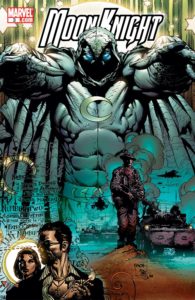 Possible Contents: Moon Knight (2006) #1-30 & Annual 1, Moon Knight: Silent Knight, Vengeance of the Moon Knight (2009) #1-10, and maybe Shadowland: Moon Knight #1-3 (but probably not Moon Knight (2011) #1-12)
Possible Contents: Moon Knight (2006) #1-30 & Annual 1, Moon Knight: Silent Knight, Vengeance of the Moon Knight (2009) #1-10, and maybe Shadowland: Moon Knight #1-3 (but probably not Moon Knight (2011) #1-12)
What is it? Moon Knight is resurrected from obscurity in a hyper-violent take where he’s a slave to Khonsu’s favor – and every time he falters he pays for it in blood.
Why do we need it? This was a brilliant, brutal extension of the original Doug Moench themes on Moon Knight, bringing his story to the present day complete with his supporting cast without too much tinkering with his core. The opening art by Finch, born to be a Batman artist, is grimy and beautifully detailed. Despite being on the fringes of the Marvel Universe, he’s tied in closely with current continuity by running afoul of the Thunderbolts during Dark Reign. I’ve read every issue of this, and I loved it.
Why not? Moon Knight isn’t an omnibus-selling character, and even if he was there’s a host of under-collected 80s and 90s material to focus on before this easily-acquired series would be up at bat. Plus, Marvel gladly jettisoned this well-developed status quo to let Brian Bendis work on ruining the character in an under-whelming 2011 run.
Want to read it? Guide to Moon Knight
![]()
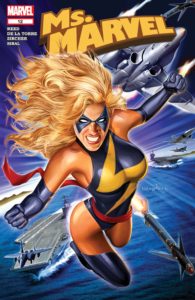 Ms. Marvel by Brian Reed (2006 – 2010)
Ms. Marvel by Brian Reed (2006 – 2010)
Probable Contents: Ms. Marvel #1-50, Giant-Sized Ms. Marvel, & Ms. Marvel: Storyteller
What is it? House of M convinces Carol Danvers she is the hero Earth needs and deserves, but that’s not as simple as it sounds for this headstrong hero.
Why do we need it? Ms. Marvel gets her own title for the first time in 30 years, and it’s starts out by standing up to the hype with big adventures, chapters of Civil War, and a long-awaited confrontation with Rogue.
Why not? Ms. Marvel’s blackouts and fluctuating powers are a nice nod to Danver’s superhero origins, but after a while they seem like an excuse not to write any good stories where she is proactive.
Want to read it? Guide to Ms. Marvel
![]()
Nova: The Annihilator by Abnett & Lanning (2007 – 2010)
Probable Contents: Nova (2007) #1-35 & Origin of Richard Rider (and maybe Annihilation: Nova #1-4 as a prequel, also by DnA))
What is it? Nova is all grown up as a leader in the war against forces of Annihilation in this intense fan-favorite run.
Why do we need it? Marvel has been aggressively re-collecting their cosmic comics from 2006 forward, but Nova keeps being the odd-man out. This entire series was penned by the massively popular writing pair of Abnett and Lanning, and it features an adult Richard Rider who is ready to tangle with big threats – including Galactus. Plus: it introduces Knowhere, the house of mercenaries seen in the Guardians of the Galaxy movie.
Why not? This run is collected across several oversized hardcovers already – the first 12 issues were an OHC on their own and then appear in Annihilation: Conquest Omnibus, another chunk are in the forthcoming War of Kings Omnibus, and the last bit could reasonably appear in the just-solicited Realm of Kings. That leaves just #13-22 of this series uncollected in oversized format – not a terrific reason to go back to the well for an entire omnibus!
Want to read it? Guide to Nova
![]()
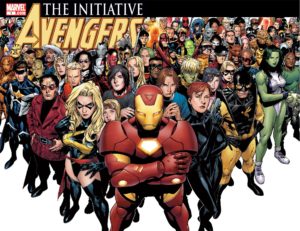 Avengers: The Initiative by Slott & Gage (2007 – 2010)
Avengers: The Initiative by Slott & Gage (2007 – 2010)
Probable Contents: Avengers: The Initiative #1-35, Annual 1, and “Special – Featuring Reptil” one-shot.
What is it? In the wake of Civil War Iron Man wants to put a super-team in every one of the 50 US States, which means he needs to train a lot of heroes and The Initiative is their proving ground.
Why do we need it? Dan Slott and Christos Gage are magic men – they never turn in a bad Marvel series, and this Avengers spin-off is no exception. The authors work with a slew of Marvel’s 90s castoffs (Rage, Slapstick), some new creations (Cloud 9, Hardball), and experienced instructors (Tigra, Taskmaster) to create a fully realized little pocket of the Avengers universe, whose internal politics are just as interesting as their run-ins with events like Secret Invasion and Dark Reign. This little title deserves a lot more notice for being an enjoyable, plot-driven read during an uneven period of Marvel.
Why not? Though this run was an enjoyable read, it wasn’t especially remarkable or memorable – certainly less so than Gage’s worthy follow-up Avengers Academy. If the Marvel films went with an Avengers boot camp at some future point then this would be a good tie-in.
Want to read it? Guide to Young Avengers
![]()
Uncanny X-Men by Matt Fraction & Ed Brubaker (2008 – 2010)
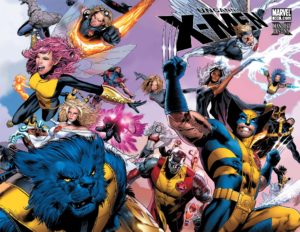 Probable Contents: Uncanny X-Men #495-522, Annual 2/2009, X-Men FCBD #1, Dark Avengers #7-8, Dark Avengers/Uncanny X-Men: Exodus & Utopia, Dark Reign: The List – X-Men, and material from X-Men Unlimited (2004) #9, and X-Men: Divided We Stand #1.
Probable Contents: Uncanny X-Men #495-522, Annual 2/2009, X-Men FCBD #1, Dark Avengers #7-8, Dark Avengers/Uncanny X-Men: Exodus & Utopia, Dark Reign: The List – X-Men, and material from X-Men Unlimited (2004) #9, and X-Men: Divided We Stand #1.
(I am omitting #526-534 in favor of pairing them with a Gillen volume because he co-plotted them and they come after the natural act-break of Second Coming. To make this more of a complete collection of the era rather than just a Fraction book, you could optionally add X-Men: Secret Invasion #1-3 by Carey, the anthologies X-Men: Manifest Destiny #1-5 and X-Men: Nation X #1-4, or the orphaned Uncanny X-Men #487-491 by Brubaker)
What is it? The X-Men are left reeling from the destruction of their home but hopeful for the future of mutant-kind as they head west to headquarter in San Francisco as lead by Cyclops, where they recollect their scattered teammates back into the fold.
Why do we need it? Despite some fan derision, with half a decade of hindsight this was a blockbuster run from Messiah Complex to Second Coming is full of our favorite mutants and fun new plots instead of endless time travel and infighting. Fans would tell you it also featured Bro Cyclops ordering everyone around and overly focused on his relationship with Emma Frost. I’d say they are delusional Jean Grey fans (of which I call myself one!) and wouldn’t know a good X-Men comic if it was being released every month and available for them to buy.
Why not? Heaven only knows. Sure, it just hit three Complete Collections, but that didn’t stop Marvel when it came to sending Uncanny X-Force to omnibus format. I suspect if Marvel were more gangbusters about promoting X-Men without the tangle of their Fox relationship we would have seen this already – the Fraction and Brubaker names make it an obvious contender, and despite all the derision Greg Land’s art would sell terrifically to fans who want comics to look like a movie.
Want to read it? Guide to Uncanny X-Men #444-544
![]()
X-Force, Vol. 3 by Kyle & Yost (2008 – 2010)
Probable Contents: #1-25 & Annual #1, X-Force Sex & Violence #1-3, Cable #11-15, Messiah War one-shot, and material from X-Force/New Mutants: Necrosha One-Shot.
What is it? In the wake of Messiah CompleX, Cyclops takes charge of mutant kind and acknowledges they are in a fight for their very survival – giving Wolverine the go ahead to assemble the most-violent crew of X-Men ever to proactively eliminate threats to mutant kind.
Why do we need it? This Kyle/Yost series not only re-invigorated the X-Force brand, it made X-Men comics urgent again. Never before has Wolverine’s bloody approach to problem solving made so much sense for other characters, which in this casting coup includes the unusual combo of Archangel, Wolfsbane, Warpath, and X-23 – with Cyclops himself condoning the missions! Every issue of this was a murderous delight.
Why not? This run has already hit a pair of oversize hardcover volumes, is interrupted three times for crossover stories (one of which – Second Coming – can’t even be included here due to its size), and isn’t nearly as resonant without understanding why Cyclops would be so keen to assemble a team of hunter/killers. Yeah, those are all lame excuses – this is great.
Want to read it? Guide to X-Force
![]()
Cable by Duane Swierczynski (2008 – 2010)
Probable Contents: Cable (2008)#1-25, King-Sized Cable, Messiah War one-shot, X-Force #14-16, X-Men: The Times and Life of Lucas Bishop #1-3, and X-Men: Future History – the Messiah War sourcebook
What is it? Cable leaps into an uncertain journey through the timestream to protect the first mutant born after The House of M from assassination at the hands of Bishop – who is certain she will cause the worst of all possible futures.
Why do we need it? The Fox film series seems to be rushing in Cable’s direction with Deadpool promising him in a feature and New Mutants being greenlit. This isn’t classic Cable, but it’s the timeswept warrior at his best as he raises his young mutant charge Hope through a variety of post-apocalyptic future landscapes while being hunted by Bishop – including a run-in with Wolverine’s brutal X-Force. This run was some challenging, sometimes disturbing sci-fi that got lost in the shuffle of expectations for Second Coming. It deserves a second look.
Why not? Even if Cable was the biggest thing in the world of comics, a weird sci-fi run that keeps him mostly disconnected from other X-Men probably isn’t the idea way to showcase him.
Want to read it? Guide to Cable & Deadpool
![]()
Daredevil by Andy Diggle AKA Daredevil: Shadowland (2009 – 2011)
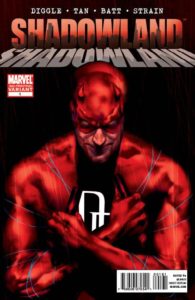 Probable Contents: Daredevil #501-512 & After The Fall, Shadowland #1-5, and Daredevil Reborn #1-6
Probable Contents: Daredevil #501-512 & After The Fall, Shadowland #1-5, and Daredevil Reborn #1-6
Possible Contents: This could go whole hog and just collect all of the other 20 Shadowland issues , which would add Shadowland: Blood on the Streets #1-4, Shadowland: Moon Knight #1-3, Shadowland: Power Man #1-4, Thunderbolts #148-149, Shadowland: Daughters of the Shadow #1-3, and the Shadowland one-shots Bullseye, Elektra, Ghost Rider & Spider-Man
What is it? After Bendis and Brubaker put Matt Murdock through the wringer, he emerges from jail ready to make a deal with his worst enemies – The Hand! The result takes Daredevil to the scariest place he’s ever been, and it’ll take the combined efforts of all of his street-level allies to rescue him from the darkness.
Why do we need it? Seriously, did you see that cast of characters and read that that description? This is the dream storyline for Marvel’s Netflix engagement, already teased via Elektra’s fate at the end of Daredevil Season 2. While Daredevil frequently takes a backseat to his many co-stars, altogether this is a harrowing book that was the only feasible escape hatch from a pretty miserable (in sentiment, not in quality) preceding decade of Daredevil.
Why not? Whiney fans. Seriously. After Bendis and Brubaker, Daredevil fans were a seriously entitled lot who wanted more down-and-dirty mob stories and knife-twists in Daredevil’s emotional wounds. When Diggle eschewed the personal and pivoted more towards the supernatural in this highly-hyped storyline, fans revolted and the “it sucked” label unfortunately has stuck for the past half-decade.
(I’m not saying you don’t have a right to dislike this story, but it wasn’t nearly as bad as everyone makes it out to be! The fact is, the story is a fun read that aligns pretty damn well with the Daredevil we’re seeing on TV.)
Want to read it? Guide to Daredevil
![]()
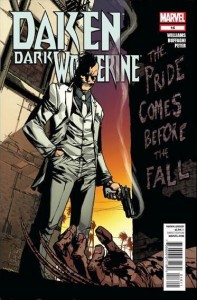 Daken: Dark Wolverine (2009 – 2012)
Daken: Dark Wolverine (2009 – 2012)
Probable Contents: Wolverine (2003) #73-74 (A-stories), Dark Wolverine #75-90, Franken-Castle #19-20, Wolverine: Origins #46-50, Daken: Dark Wolverine #1-23 & 9.1, and X-23 #7-9.
What is it? Wolverine’s long-lost son breaks out into his own book full of villainy and sexual innuendo during Dark Reign and then explodes into his own transgressive title.
Why do we need it? Marvel’s viciously charming bi-sexual villain was so good in his initial run that you couldn’t tear your eyes from the page. You could practically call this “Wolverine: The CW Years” for all of its sexual undertones and figurative and literal backstabbing. Every month I was in disbelief that Marvel was still releasing this weird comic as Daken seduced film producers, tried to take over Madripoor, and fought Taskmaster and the Runaways.
Why not? Daken’s had a lowered profile since this run, basically just getting used as fodder by Rick Remender across two titles. I get the feeling Marvel is afraid to do anything too good with the character lest it give Fox some ideas. If Fox was smart, they’d be developing this Wolverine for TV right now!
Want to read it? See Daken in X-Men Ongoings.
![]()
Avengers Academy by Christos Gage (2010 – 2012)
Probable Contents: Avengers Academy #1-39 & 14.1, Avengers Academy Giant Size, and material from Enter the Heroic Age
What is it? The Avengers finally get serious about being custodians of a younger generation of heroes, but will their own traumatic pasts be more of a danger to them than any villain or all-powerful god?
Why do we need it? Author Christos Gage performs the ultimate parlor trick by inventing an almost entirely new team from whole cloth while making it seem like they were all rooted in the expansive Dark Reign era (during which you’d be forgiven if you missed them). This team of would-be sidekicks feels real and dynamic thanks to their various past traumas and current physical limitations, which makes for a lot of awesome character development that doesn’t require a lot of super-battles to enjoy.
Why not? The problem with inviting brand new characters is that if no one else picks them up your book is promptly forgotten. Gage really penned a modern classic here, but when only Hazmat mildly broke out during Avengers Arena it probably doomed this title to be forgotten.
Want to read it? Guide to Young Avengers
![]()
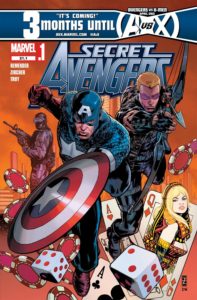 Secret Avengers by Spencer, Ellis, & Remender (2010 – 2012)
Secret Avengers by Spencer, Ellis, & Remender (2010 – 2012)
Probable Contents: Secret Avengers #1-37, 12.1, 21.1 and Fear Itself: Black Widow
What is it? A stealthier take on Avengers who deal with major problems before they explode written by three of the best authors in comics and feature a rotating cast of your favorite B-list team members.
Why do we need it? Despite the trio of authors taking wildly different approaches to the concept of Secret Avengers, this run is compelling from front to back with some truly remarkable moments. Really, it’s one of the few series of the past half decade that Marvel gave time to breath and grow across multiple runs.
Why not? Each of these three authors focuses on a different sort of mission for the team, so this isn’t exactly a cohesive whole – but it’s so darn good at least once in each of their runs! It’s really hard to argue against this book.
Want to read it? Guide to Secret Warriors & Secret Avengers
![]()
Uncanny X-Men by Kieron Gillen (2011 – 2012)
Probable Contents: Uncanny X-Men (1963) #526-544 & 534.1, Uncanny X-Men: The Heroic Age, X-Men: Re-Genesis, Uncanny X-Men (2011) #1-20, AvX: Consequences #1-5
(Gillen co-plotted #526-534, and they fit better here than in a Fraction volume – partially because Second Coming occurs directly prior. Yes, that takes away from #534.1 as his slam-bang introduction, but if you go back and read those prior issues they feel like Gillen comics.)
What is it? Kieron Gillen introduces new mutants, wraps up long-running plot threads, does the first interesting thing with Juggernaut of all time, makes Magik an A-list hero, and takes Cyclops’s iron fist of mutant rule to its logical conclusion.
Why do we need it? Gillen may be the best post-Claremont author the X-Men ever had, and he spends the entire time focused on a marquee team of Cyclops, Magneto, Emma Frost, Colossus, Kitty Pryde, Namor, Hope, and a helping of Wolverine, Storm, and Magik. If the disaster of Jason Aaron’s Wolverine and The X-Men merited an omnibus, certainly this run does too!
Why not? You’re asking me? I’d love to have this book! Seriously, there’s no argument against it other than Marvel being stingy. It’s a mega-popular run that was the top-selling comic for most of its time on the shelves. It features all of the biggest-name X-Men characters. It looks stellar. It lines up perfectly with the Jason Aaron Wolverine & The X-Men omnibus. There is no logical argument against it other than that oversized X-Men releases should probably focus on filling gaps.
Want to read it? Guide to Uncanny X-Men
![]()
Punisher by Greg Rucka (2011 – 2012)
Probable Contents: Punisher (2011) #1-16 & Punisher War Zone #1-5, a crossover with Daredevil #11 and Avenging Spider-Man #6, and material from Spider-Island: I Love New York City (maybe adding the non-Rucka Punisher: The Trial Of The Punisher (2013) #1-2, which follows from here and is not otherwise collected)
What is it? A back-to-basics Punisher who tangles with mob before his violet tactics tactics run afoul of The Avengers.
Why do we need it? Rick Remember’s oddball run on Punisher got an omnibus thanks to his rising star as a creator, but it’s really Rucka’s run that was marvelous. This was a simple, brutal Punisher saddled with a conscience by way of looking after a sidekick. Marvel hasn’t put a lot of effort into selling Rucka runs, since he’s more of a DC writer, but his Image books sell like hotcakes – this would likely be devoured, and it’s a great fit with the Netflix series.
Why not? It’s hard to argue against a slim collection of this run, which was a great read and well-liked by fans. If anything, the argument is that most readers would prefer Punisher MAX or breaking ground on collecting his 80s material in oversize format.
Want to read it? Guide to Punisher
![]()
Iron Man by Kieron Gillen (& Tom Taylor?) (2012 – 2015)
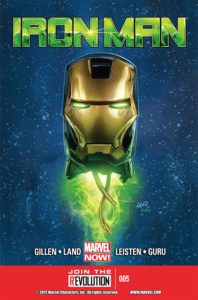 Probable Contents: Iron Man (2012) #1-27 and Annual 1, plus Original Sin #3.1-3.4: Hulk vs. Iron Man. (If we add Taylor’s run, Superior Iron Man #1-9.)
Probable Contents: Iron Man (2012) #1-27 and Annual 1, plus Original Sin #3.1-3.4: Hulk vs. Iron Man. (If we add Taylor’s run, Superior Iron Man #1-9.)
What is it? Iron Man confronts the danger of his own inventions and spends some time in deep space, where he makes a surprising discovery about his parents.
Why do we need it? Kieron Gillen adopted Iron Man with the unenviable task of making the Golden Avenger interesting again for the release of his third film. He really nailed his mission, and while hardcore comic fans slept on this run, it’s extremely digestible for more casual readers and genuinely fun. After a series of one-and-done issues, Iron Man ships out for a space adventure that requires no prior knowledge intercut with flashbacks to his father’s adventures. It’s only a later Rings of the Mandarin arc that falls a little flat. You could tack on the brief Tom Taylor run on Superior to fill out the book, but it’s post-Axis and doesn’t necessarily follow from Gillen’s work.
Why not? Fans never got excited about Gillen’s run, and revising Tony Stark’s parentage seems like the ultimate needless retcon. It was like a tree falling in an empty forest – no one seems to have heard or noticed it.
Want to read it? Guide to Iron Man
![]()
Avengers: Battle Royale – AKA Avengers Arena & Avengers Undercover (2012 – 2014)
Probable Contents: Avengers Arena (2013) #1-18 and Avengers Undercover (2014) #1-10.
What is it? A bunch of D-list young characters, Nico Minrou, and X-23 get dropped into a Hunger Games style kill-or-be-killed competition designed by Arcade.
Why do we need it? Dennis Hopeless put Marvel’s youngest heroes through the wringer in this pair of dark Marvel Now series that would make a kick-ass omnibus. Every issue was filled with dynamic characters, strong artwork, shocking twists, and tough decisions. With the right YA marketing it would be hoovered up by fans of series like Hunger Games and Divergent – so Marvel ought to strike now before they’ll all too old.
Why not? In order to execute his brilliant concept, Hopeless got stuck with a crew of no-name heroes and X-23, who he had to give up as his series continued from Arena to Undercover. Undercover got cut off slightly early due to declining sales, although Hopeless still managed to squeeze in his intended ending.
Want to read it? Guide to Young Avengers
![]()
Superior Spider-Man by Slott & Gage (2013 – 2014)
 Probable Contents: Amazing Spider-Man #698-700, Superior Spider-Man #1-32 & Annual 1-2 (plus, if Marvel felt adventurous, maybe Avenging Spider-Man #15.1 & 16-19 and Superior Spider-Man Team-Up #1-12)
Probable Contents: Amazing Spider-Man #698-700, Superior Spider-Man #1-32 & Annual 1-2 (plus, if Marvel felt adventurous, maybe Avenging Spider-Man #15.1 & 16-19 and Superior Spider-Man Team-Up #1-12)
What is it? Dr. Octopus finds victory in his greatest defeat: his frail body literally “gives up the ghost” when he dies and transfers his consciousness into Peter Parker’s body, leading to the era of a Superior Spider-Man who is great at all of the things that Parker was terrible at doing.
Why do we need it? This run was loathed on principal by butt-hurt fans when it launched, but it was truly a modern marvel. Dan Slott used the opportunity of having a new mind driving Spider-Man’s body to examine all of his normal tropes, like letting villains get away, failing at romance, and never putting his genius intellect to the greatest use. If that sounds like everything’s going well for Spider-Ock, well … you’ll have to read to learn more.
Why not? There’s a bait-and-switch aspect to this material, since it doesn’t really feature the Spider-Man you’d typically expect. Also, despite Slott’s run being widely popular, there aren’t any prior omnibuses in this line and this run already got covered comprehensively in oversized hardcover. There’s not a lot of utility to hitting another format.
Want to read it: Guide to Spider-Man
![]()
Avengers – Agents of S.H.I.E.L.D. AKA Secret Avengers Vol. 2-3 (2013 – 2015)
Probable Contents: Secret Avengers, Vol. 2 (2013) #1-16 and Vol. 3 (2014) #1-15, plus Original Sin: Secret Avengers Infinite Comic #1-2 and material from Marvel Now! Point One.
What is it? Maria Hill keeps a select group of Avengers temporarily brainwashed so she can send them on missions where their hands get really dirty. After a tangle with AIM, the team needs to diffuse the possible end of the world with the help of a lovestruck MODOK and a rogue Deadpool.
Why do we need it? While Marvel spends a lot of effort and ink trying to ape a TV show with middling ratings in their new SHIELD books we all know this is what fans expected from the Agents of SHIELD TV show – heroes on SHIELD-mandated missions kicking ass and thwarting super villains. This two volume run from Nick Spencer and Ales Kot is a madcap delight full of film Avengers, plus Mockingbird and Deadpool, without a single bad issue. It begs for an omnibus – it just needs the right branding!
Why not? This was not a wildly successful run in single issues or collected editions, so there isn’t a built-in market for the book. Also, on the whole this book is just a little obtuse, with Mockingbird’s unravelling double-agent mission and Ales Kot’s puzzling portion. (I loved all of it.)
Want to read it? Guide to Secret Warriors & Avengers
![]()
Black Widow by Edmonson & Noto (2014 – 2015)
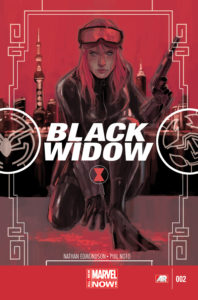 Probable Contents: Black Widow (2014) #1-20, Punisher #9, material from All-New Marvel Now! Point One (2014) #1
Probable Contents: Black Widow (2014) #1-20, Punisher #9, material from All-New Marvel Now! Point One (2014) #1
What is it? Black Widow in her longest-running solo series, where she comes up against a conspiracy deadlier and more secret than she is, as drawn entirely by Phil Noto – one of the best working artists in the business today.
Why do we need it? A modern, self-contained, medium-lengthed Black Widow run drawn by Phil Noto, who is especially great when it comes to sketching realistic female characters. Also, here’s a crazy thought – it could be double-billed as “Black Widow & The Punisher by Nathan Edmonson” and include both of the series!
Why not? This curiously somber Black Widow run seems to operate on the thesis statement that Black Widow is overconfident and pretty terrible at her job. That’s not just a fan railing against a character being portrayed as less than perfect – Nathan Edmonson seemed to actively dislike his title character. While this run looks great and is a solid read, it’s probably not a good look for the first oversized Black Widow release.
Want to read it? Guide to Black Widow
![]()
[…] have to dig pretty deep to omnibus a classic run that was neither on the Secret Ballot nor on my list of 50 additional runs that should head to omnibus. Marvel is really scraping the bottom of the barrel for Guardians […]